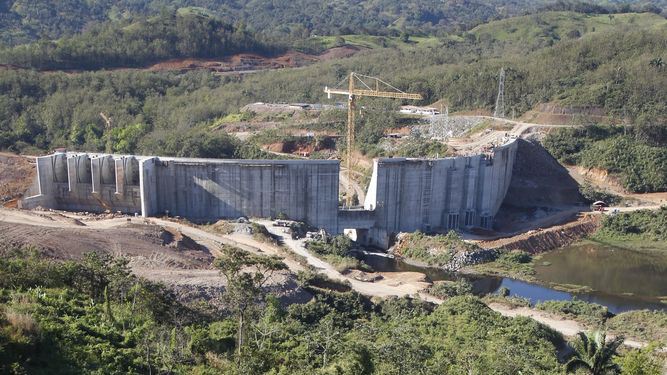Panama’s government agreed to suspend the highly contested Barro Blanco hydroelectric dam Thursday after meeting with Indigenous leaders who have mobilized against the project over concerns that their rights have been violated and their land, culture and livelihoods are threatened.
The agreement gives some hope to the 170,000 members of the Ngabe Bugle community who risk losing their land and culture.
As a result, the government will meet representatives of the European banks funding the project on July 6 in a bid to explore various options with Panamean mining company GENISA, in accordance with a previous deal reached with Indigenous authorities signed on August 10, 2015.
The Ngabe Bugle communities affected by the project have argued that their rights to free, prior and informed consent under International Labor Organization Convention 169 have been violated and that they never gave permission for the dam.
The government will then meet again with Indigenous authorities to seek a solution to their concerns.
The banks include Germany’s DEG, Deutsche Entwicklungsgesellschaft, which has invested about US$22 million in the project.
“DEG is a bank whose projects should aim at favoring the development of the countries where they are carried out. But throughout this process, started in 2011, there have been conflicts without effective answers,” Guadalupe Rodriguez from the German nonprofit group Rettet den Regenwald, or Save the Jungle, told Deutsche Welle.
Nevertheless, she recognized that DEG and Netherlands Development Finance Company, another European funder, finally set up a mechanism meant to receive the complaints of affected communities. However, she argues that they have still failed to appropriately address other matters.
The Barro Blanco dam was suspended in 2015 in light of Ngabe Bugle protests in anticipation of a full agreement, but the company still moved ahead with work on the project.
On May 24, the company opened the floodgates on the dam to start filling the reservoir. At the same time, authorities forcibly removed nearly three dozen people and demolished their nearby encampment, according to M-10, a movement representing affected communities.
However, thanks to the Indigenous mobilization, the dam did not exceed 90 meters above sea level, traditional authorities of Ngabe Bugle community stated.
According to the Center for International Environmental Law, filling the reservoir will flood nearly 15 acres (6 hectares) of Indigenous lands surrounding the site of the dam on the Tabasara River.
Government officials claim that the communities were informed of the impending eviction and plan to move forward with testing the reservoirs, Prensa Latina reported. A government spokesperson offered communities an apology for any “confusion” that may have occurred.
Critics of the dam fear that the project will displace tens of thousands of people, harm the local agricultural sector, and flood Ngabe Bugle land and traditional sacred sites. The Tabasara River is fundamental to the livelihoods of the local Ngabe Bugle people, who rely on it for water, fishing, and agricultural production along its fertile banks.
